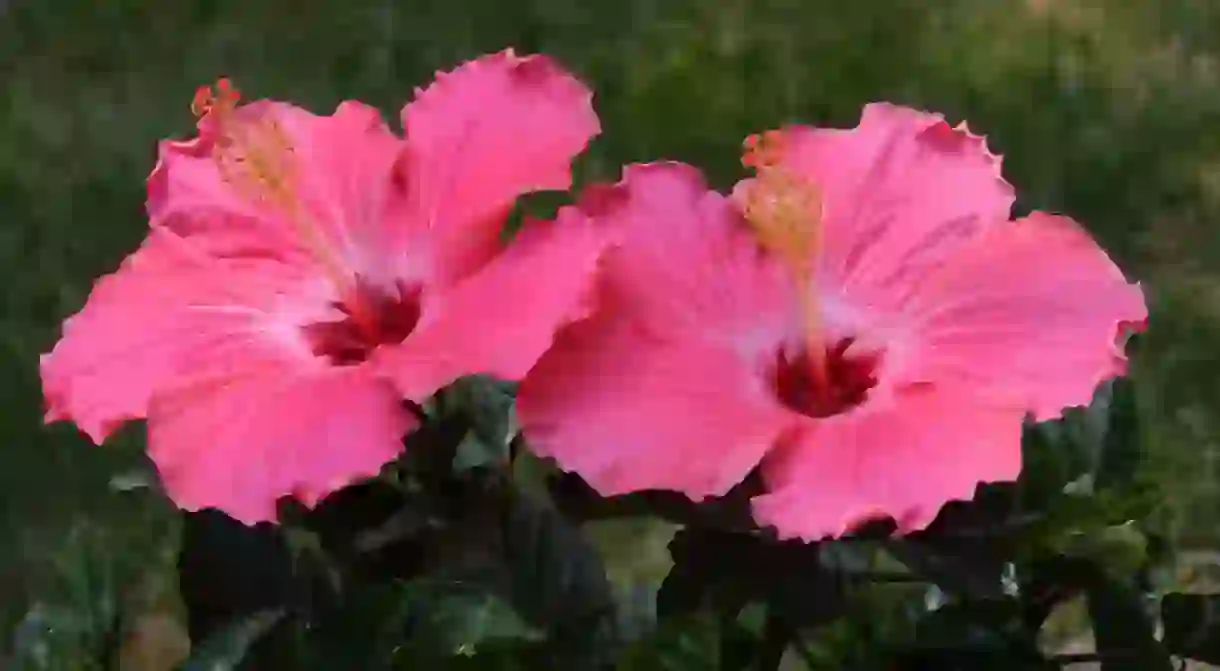The Flora and Fauna of Puerto Rico

Visitors to Puerto Rico often leave feeling that it is the most beautiful place they have ever seen and cannot wait to return. The flora and fauna of the island add to the rainbow of color that abounds. Here’s a guide to some of the incredible animals and plant-life you might see on your next visit.
Iguanas
Iguanas are native to Central and South America, but were introduced to Puerto Rico in the 1970s through the pet trade. Some of these pets were released into the wild and have now become a full-blown pest control issue, mostly due to the fact that they have no natural predator on the island. Their herbivorous diet makes the agricultural southeast region of the island a perfect area for them, but a detriment to the farmers. Harvest and sale of their meat may be a solution to this problem. If you want to see a lot of them, visit Puerto Rico in March, which is their mating season.

Flamboyant trees
In July, the roadsides and mountains glow with the fiery red of the flamboyant tree. These gorgeous trees are also found in yellow, but are not as prevalent. There is also a rare blue flamboyant, but there is some debate whether this is a true flamboyant. Red, yellow or blue, they are all breathtaking.

Puerto Rican screech owl
This small brown owl is native to Puerto Rico, and is found primarily in El Yunque rainforest, but can also be seen on the islands of Vieques and Culebra. They help with pest control by eating large insects like cockroaches, small lizards like anoles and various rodents.
Puerto Rican hibiscus
According to elboricua.com, Puerto Rico’s national flower is the flor de maga. The maga is closely related to hibiscus, but unlike the common hibiscus the maga is a saucer-sized flower and grows on a large tree. The maga is native to Puerto Rico and is grown in tropical climates as an ornamental plant, with pink or red flowers. The maga flowers are cup-shaped with five overlapping petals. These flowers grow on a tree, not a bush, and they depend on birds and bats for dispersal.

Puerto Rican parrot
At the time of the first Spanish colony in the early 1600s, there were believed to be a million parrots on the island. But over the years, as human population increased and deforestation occurred, the numbers dropped drastically until in 1973 there were only 13 iguacas, the Taino word for the parrot. The Puerto Rican Parrot Recovery Program was making great strides to renew the population and at last count, before hurricanes Irma and Maria, there were almost 60 parrots in the wild. The scientists at El Yunque continue to work at locating and reviving their parrot population.

Beehive ginger
Beehive ginger have a unique shape and are a sturdy flower that comes in a number of different colors. Chocolate beehive ginger is a chocolaty brown, yellow beehive ginger is yellow with splashes of red, and Pink Maraca has a reddish-pink lower bract area topped with gold. Depending on the variety, beehive ginger can grow from four to 15 feet (1.22 to 4.57 meters) tall.

Avocado trees
You will find the most amazing avocados in Puerto Rico. The variety grown here is a very large avocado with tremendous flavor and a very creamy texture The fruit is ready around September and October, and the trees only produce every other year. Two trees are needed to produce fruit.

Rhesus macaques monkeys
Cayo Santiago is also known as “Monkey Island.” In 1938, 406 rhesus macaque monkeys were shipped there and have been studied ever since. It took the monkeys a little time to adjust, but they eventually did and started breeding. They quickly ate most of the naturally-available food, so monkey chow was shipped to the island and still is to this day. Hurricane Maria devastated the island, and scientists who work with the populations indicate that they are skittish, probably suffering from some PTSD, but employees were going to the island the day after Maria to check on them and take them food. The monkeys used their survival skills to hide and huddle, and they continue to survive.

Coccoloba rugosa
Coccoloba rugosa is an ornamental plant that is also known as red sea grape. This plant is native to Puerto Rico and can be identified by its long thin cluster of red globe-shaped lobes.
Coquís
No article about the fauna of Puerto Rico is complete without including the ever-present and very loud coquí. The male coquí’s mating call of “ko-kee,” from which it gets its common name, has been measured at 90 to 100 decibels, making it the loudest existing amphibian. Once found only in Puerto Rico, the coquí is the cultural symbol of the island. There are 17 different coquís on the island that range in color from green to yellow to brown with various accent colors.














